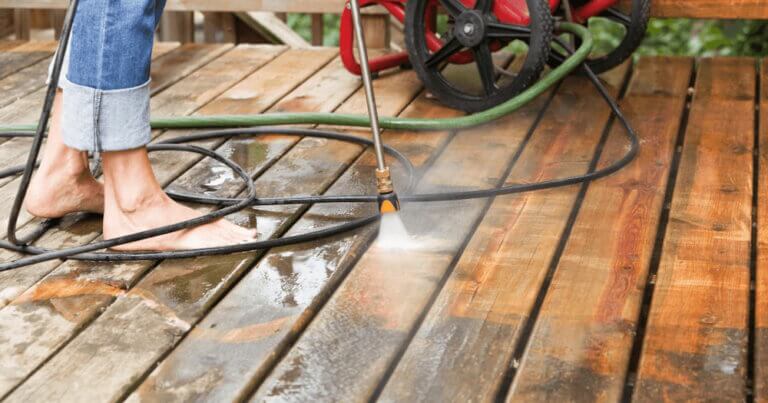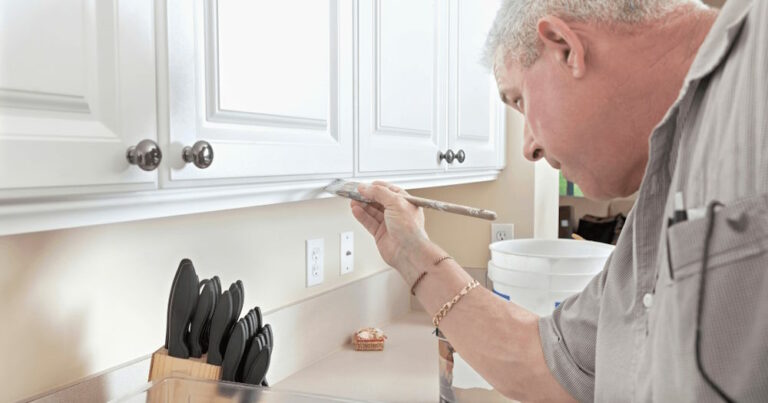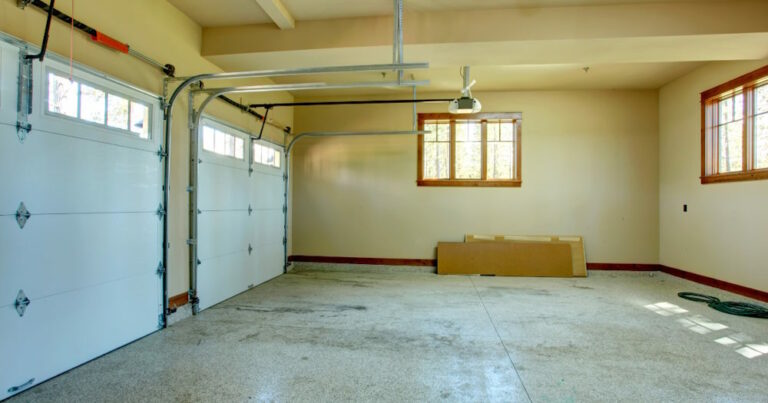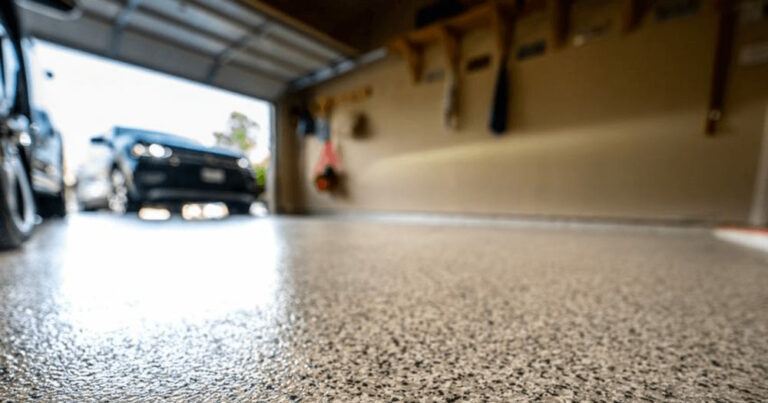Painting the exterior of your house can be a daunting and overwhelming task. However, with the right expert tips, you can transform your home’s facade into a stunning masterpiece that stands out in the neighborhood.
From prep work to adding those final fresh paint touches, we’ve gathered a collection of exterior painting tips that will help you achieve a great paint job.
Key Takeaways:
- Proper prep work is the key to a successful exterior house painting project.
- Thoroughly clean and repair exterior surfaces before painting to ensure a smooth and durable finish.
- Choose the right type of paint for your specific surface and climate.
- Use proper painting techniques to achieve an even and professional-looking finish.
- Add decorative details like accent colors to enhance the aesthetic appeal of your home.
Planning and Preparation
If you’re planning an exterior painting project, the first step is proper planning and preparation. Taking the time to plan ahead will ensure that your project runs smoothly and results in a beautiful, long-lasting finish. Here are some essential tips for planning and preparation:
- Assess the condition of your house: Before you start painting, it’s important to assess the current condition of your house. Look for any areas that require repairs or cleaning, and take note of any architectural features you want to emphasize.
- Choose the right paint: Selecting the right type of paint is key to achieving a durable finish. Consider the climate in your area, as well as the type of surface you’re painting, when choosing your paint.
- Gather your tools and materials: Make sure you have all the necessary tools and materials before you start painting. This includes brushes, rollers, drop cloths, masking tape, and any other equipment you may need.
Proper planning and preparation is crucial for a successful exterior painting project. By taking the time to assess your house, choose the right paint, and gather all the necessary materials, you’ll set yourself up for a seamless painting experience and a stunning finished product.
Cleaning and Repairing
Before starting your exterior house painting project, it’s crucial to ensure that the surfaces are clean and free from damages. Cleaning the exterior surfaces of your house will remove any dirt, grime, or debris that could compromise the paint’s adhesion.
Begin by using a pressure washer to remove any loose paint, dirt, and mildew. If your house was built before 1978, it may contain lead paint, so you should take extra precautions to protect yourself and your family while removing the paint.
If any damages or cracks exist, too-sized for a caulk, you can use an epoxy filler to repair them effectively. Epoxy fillers are perfect for mending bare wood or masonry surfaces, as they’re long-lasting and durable. Allow the filler to dry thoroughly before sanding down the area to achieve a smooth finish.
Pro Tip: Wear protective gear, including gloves, goggles, and a face mask, when working with chemicals or sanding the surfaces.
Surface Preparation

Surface preparation is the key to achieving a long-lasting and professional-looking exterior paint job. Without proper sanding and priming, the paint will not adhere well to the surface and may peel or chip away prematurely.
Step 1: Inspect and Clean
Before sanding, inspect the surface for any cracks, flaking, or damage. Use a pressure washer or a garden hose to clean the surface thoroughly, removing any dirt, grime, or loose paint. Allow the surface to dry completely before proceeding to the next step.
Step 2: Sanding
Use a sandpaper or a sanding block to smooth out any rough areas on the surface. Sand until the surface is even and free of bumps or imperfections. Sanding also helps to create a slightly rough texture on the surface, which allows the paint to adhere better.
Step 3: Priming
Apply a layer of primer to the sanded surface, using a brush or a roller. The primer helps to seal the surface and provides a smooth base for the paint to adhere to. Choose a primer that is compatible with the type of paint you plan to use.
Note: If the surface has never been painted before, consider applying two coats of primer for optimal coverage and adhesion.
Step 4: Address Specific Surface Issues
If the surface has any specific issues such as rust, mildew, or stains, address them before painting. For instance, use a rust converter to treat rusted areas, or a bleach solution to eliminate mildew. If the stains are oil based, use a solvent-based cleaner to remove them.
By following proper surface preparation techniques, your exterior paint job will look smooth, even, and beautiful. Don’t skip this crucial step to have a good paint job!
Choosing the Right Paint and Color
When it comes to exterior house painting, choosing the right paint and color is crucial. Not only does it affect the overall look of your home, but it can also impact its durability and protection against the elements. Here are some expert tips to help you make the right choice:
Choosing the Right Paint
When selecting paint for your exterior, it’s important to choose a high quality paint option that will provide adequate protection against UV rays, moisture, and temperature changes. Look for paints specifically designed for outdoor use, such as acrylic or latex paint options. These types of paints are durable, flexible, and resistant to cracking or peeling.
Additionally, consider the type of surface you’ll be painting. Some paints are formulated for specific surfaces, such as stucco, brick, or wood. Check the label to ensure you select the appropriate paint for your home’s exterior.
Selecting Colors
Choosing the right color is a fun and creative process, but it’s important to keep in mind that the color you select will impact the overall look and feel of your home. Start by considering the architectural style of your home, as well as the colors of neighboring homes. You want to choose a color that complements your home’s features and stands out in a positive way.
| Color Scheme | Description |
| Monochromatic | Using shades of the same color to create a subtle and cohesive look. |
| Analogous | Using colors that are adjacent to each other on the color wheel for a soothing and harmonious effect. |
| Complementary | Using colors that are opposite each other on the color wheel to create a vibrant and bold contrast. |
Take advantage of technology by using websites or apps that allow you to upload a photo of your home and test out different color combinations. Additionally, consider the lighting in your neighborhood and how it may affect the appearance of your chosen color.
By choosing the right paint and color for your exterior house painting project, you can create a stunning and lasting impression for your home’s facade.
Paint Application Techniques
When it comes to painting the exterior of your house, using the right paint application techniques is just as important as selecting the right paint. Proper application can make all the difference in achieving a smooth and professional finish. Here are some tips to help you master the art of paint application:
Brushes vs. Rollers vs. Sprayers
One of the most common dilemmas when it comes to paint application is choosing between brushes, rollers, and sprayers. Each method has its own advantages and disadvantages, so it ultimately depends on the specific needs of your project.
Brushes: Ideal for smaller areas or when precision is needed, such as painting trim or edges. Brushes also allow for more control to spread paint when creating texture or patterns.
Rollers: Great for larger areas, such as walls or siding, as they provide even coverage and can save time. Rollers also come in various sizes, allowing for customization depending on the surface being painted.
Sprayers: Fastest application method, ideal for large surfaces, and can produce a smooth, even finish. However, sprayers require more preparation and cleanup time and can be more difficult to control in windy conditions.
Techniques for Even Coverage
Regardless of the application method used, proper techniques are essential for achieving even coverage and avoiding drips and streaks. Here are some tips to keep in mind:
- Always paint from top to bottom, starting with the highest point of your house and working your way down. This will help avoid drips and make it easier to catch any mistakes as you go.
- Overlap each stroke slightly to ensure even coverage and blend the edges of each section.
- Don’t overload your brush or roller with too much paint, as this can cause drips and uneven application due to excess paint. Instead, use a light, consistent pressure and add more paint as needed.
- When using a sprayer, keep the nozzle at a consistent distance from the surface being painted and move in a steady, back-and-forth motion.
Weather Considerations
The weather can greatly impact the outcome of your paint job, so it’s important to take certain precautions depending on the conditions. Here are some tips to keep in mind:
- Don’t paint in direct sunlight or extremely hot temperatures, as this can cause the paint to dry too quickly and result in brush or roller marks.
- Avoid painting in high humidity or when rain is in the forecast, as this can cause the paint to bubble or peel.
- If you must paint in less than ideal conditions, consider using a paint additive to improve adhesion and prevent cracking or peeling.
By following these paint application techniques, you can ensure a flawless finish for your exterior house painting project. Don’t be afraid to experiment with different methods and remember to always take your time and pay attention to detail.
Adding Decorative Details to your Exterior House Painting Project
When it comes to exterior house painting, adding decorative details can make a world of difference in the overall look and feel of your home’s facade. In this section, we’ll share some expert tips on how to incorporate accent colors and unique touches to make your house stand out in the neighborhood.
Consider Adding Accent Colors
Accent colors can be a great way to add visual interest and depth to your exterior house painting project. You can choose a contrasting color for your front door, shutters, or trim to make these elements pop and create a focal point that draws the eye.
You can also opt for a monochromatic look by selecting different shades of the same color for your accents. This approach is particularly effective for houses with a more minimalist or modern design.
Get Creative with Texture
Texture is another way to add decorative details to your home’s exterior. You can use decorative stucco or stone accents to create depth and visual interest, or consider adding wood paneling or shingles for a cozy, rustic look.
Another popular option is to add a decorative mural or patterned tile to your front porch or entryway. These unique touches can add an artistic flair to your home and make it truly one-of-a-kind.
Use Plants and Landscaping to Enhance Your Paint Job
Plants and landscaping can be a great way to complement your exterior paint job and add extra curb appeal to your home. Consider planting flowers or shrubs in complementary colors to your home’s color scheme, or select plants with interesting textures or shapes to add variety and visual interest.
You can also use outdoor lighting to highlight your landscaping and add additional visual depth and interest to your home’s exterior.
Craft a Custom Color Scheme
Choosing the right color scheme for your exterior house painting project is key to achieving a cohesive and polished final look. You can work with a professional color consultant or use online tools to help you select complementary colors that enhance the architectural features of your house.
Remember to take into account the style of your home, the surrounding landscape, and the overall feel you want to create. With a little creativity and planning, you can craft a custom color scheme that truly makes your house shine.
Maintenance and Longevity
Maintaining the exterior paint of your house is crucial for its longevity and continued beauty. By keeping up with regular inspections, cleaning, and touch-ups, you can ensure that your house remains the envy of the neighborhood for years to come.
One essential aspect of maintenance is regular cleaning. Over time, dirt, grime, and environmental factors can cause your exterior paint to look dull or discolored. By washing your home’s exterior with a mild detergent and water twice a year, you can help prevent the buildup of these substances and keep your paint looking fresh.
In addition to regular cleaning, it’s also important to inspect your house for any signs of wear and tear. If you notice any cracks, peeling paint, or other damage to your exterior paint, it’s crucial to address these issues as soon as possible to prevent further damage.
To maintain your exterior paint job, consider implementing a regular touch-up schedule. This can involve repainting any areas that have started to fade or peel, or simply applying a fresh coat of paint every few years to keep your house looking its best.
Longevity of Exterior Paint
The longevity of your exterior paint job depends on several factors, including the type of paint used, the quality of the application, and the weather conditions in your area.
High-quality paints tend to last longer than cheaper alternatives, as they contain more pigments and binders that help the color adhere to the surface better. Additionally, how carefully the paint is applied can directly impact its longevity. By ensuring that each coat is applied evenly and allowed to dry completely before the next one is added, you can help maximize the lifespan of your exterior paint.
Finally, weather conditions can also play a role in how long your exterior paint lasts. Exposure to extreme temperatures, humidity, sunlight, and rain can all cause the paint to deteriorate more quickly. If you live in an area with harsh weather conditions, it may be necessary to repaint your house more often to keep it looking its best.
Conclusion

We hope these expert tips have provided you with the knowledge and inspiration to tackle your next exterior house painting project with confidence. Remember, careful planning, thorough preparation, and diligent maintenance are key to achieving stunning and long-lasting results of your new paint.
Transform Your Home
By following the steps outlined in this guide, you can transform your home’s facade into a true work of art. From choosing the right paint and color to adding decorative details, you have the power to create a welcoming and visually striking exterior that reflects your personal style and enhances your home’s curb appeal.
Maintain Your Investment
But don’t forget, the work doesn’t end with the final brushstroke. Ongoing maintenance is essential for preserving your paint job’s longevity and beauty. Regular inspections, cleaning, and touch-ups will keep your exterior looking its best for years to come.
Thank you for reading, and happy painting!
FAQ
What are some essential exterior house painting tips?
Some essential exterior house painting tips include performing proper preparation work, choosing the right paint and color, using proper paint application techniques, and maintaining the paint job for longevity.
How important is planning and preparation for an exterior painting project?
Planning and preparation are crucial for an exterior painting project. They involve assessing the condition of your house, selecting the right paint, and gathering the necessary tools and materials to ensure a successful and professional-looking paint job.
Why is cleaning and repairing exterior surfaces important before painting?
Cleaning and repairing exterior surfaces before painting is important to ensure a smooth and durable paint finish. This process involves removing dirt, mildew, and loose paint, as well as fixing any cracks or damages.
What does surface preparation entail in an exterior house painting project?
Surface preparation involves sanding, priming, and addressing specific surface issues to ensure optimal adhesion and long-lasting results. It is an important step in achieving a professional-looking paint job.
How do I choose the right paint and color for my exterior house?
When choosing paint for your exterior house, consider the type of surface and climate. Select a paint color that complement the architectural features of your house and enhance its overall look.
What are some paint application techniques I should know for exterior house painting?
Some paint application techniques include using brushes, rollers, or sprayers. It is important to apply paint evenly and avoid common mistakes to achieve a smooth and professional finish.
How can I add decorative details to enhance the exterior of my house?
Adding decorative details such as accent colors can elevate the aesthetic appeal of your house. Consider incorporating unique touches and creating visual interest to make your home stand out in the neighborhood.
What maintenance steps should I take to ensure the longevity of my exterior paint job?
To ensure the longevity of your exterior paint job, regularly inspect the surfaces, clean them, and perform touch-ups as needed. Proper maintenance is essential for preserving the beauty of your home’s exterior.





